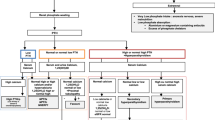Abstract
This report deals with the relationships between glucose (G) and insulin on the tubular transport of phosphate (P) in chronically diabetic rats with high plasma levels of parathyroid hormone (PTH). Alloxan-induced diabetes leads to phosphorus depletion of the soft tissues. This phenomenon appears associated with weight loss and negative P balances caused by the increased urinary P excretion. Administration of 2 IU of insulin/100 g body weight (bw) to diabetic rats normalized their P balance and body weight. The effect of parathyroid function on the P metabolism of diabetic rats was investigated with balance experiments. Diabetic rats, intact or thyroparathyroidectomized (TPTX), have a greater urinary excretion of P than their controls. However, in control rats, the ratio intact:TPTX for urinary P is 1.0:0.76, showing the antiphosphaturic effect of parathyroid ablation. For diabetic animals, on the other hand, the ratio is 1.0:1.44. The simultaneous deficit of insulin and PTH thus quadruples the urinary P loss, instead of compensating for each other. The contribution of insulin deficit and hyperglycemia to the defect in tubular reabsorption (TRP) was investigated with clearance experiments (done on anesthetized, perfused rats). Five experimental groups were used: Controls (C), diabetics (D), controls+glucose (C+G), diabetics+insulin (D+I) and diabetics+insulin+glucose (D+I+G). All experimental groups showed a linear relationship between the TRP of P and G. The regression equation for C is significantly different (F=40.1, P<0.001) from that of D animals. The slope value measure the number of µmoles of P per µmol of G reabsorbed. For C and D rats, the ratio P:G approximates 1:4 and 1:20, respectively. The increase in P:G ratios represents the competition between both substrates for tubular resorption. Glycemias up to 11 mM (C and D+I) exist concurrent with the P:G ratio 1:4. Glycemias above 25 mM (D, C+G and D+I+G) produce a P:G ratio of 1:20. Fractional excretion of P (FEP) increased significantly in untreated, chronically diabetic rats (0.47± 0.12 vs controls=0.05±0.01, P<0.001). After a single intramuscular injection of insulin, the FEP decreased as a function of insulin levels. To normalize the FEP of diabetic rats in short-term experiments, insulin had to be administered in doses that produce plasma insulin levels 25 times greater than normal. The general information afforded by the present experiments shows that in untreated, chronically diabetic rats, insulin deficit plays an indirect role. The absence of PTH enhances the effect of hyperglycemia. The latter and the concurrent tubular overload of glucose are the cause of hyperphosphaturia in these animals.
Similar content being viewed by others
Author information
Authors and Affiliations
Additional information
Received: 10 September 1996 / Accepted in revised form: 18 April 1997
Rights and permissions
About this article
Cite this article
Locatto, M., Di Loreto, V., Fernández, M. et al. Relative weight of glucose, insulin and parathyroid hormone in the urinary loss of phosphate by chronically diabetic rats. Acta Diabetologica 34, 211–216 (1997). https://doi.org/10.1007/s005920050076
Issue Date:
DOI: https://doi.org/10.1007/s005920050076




